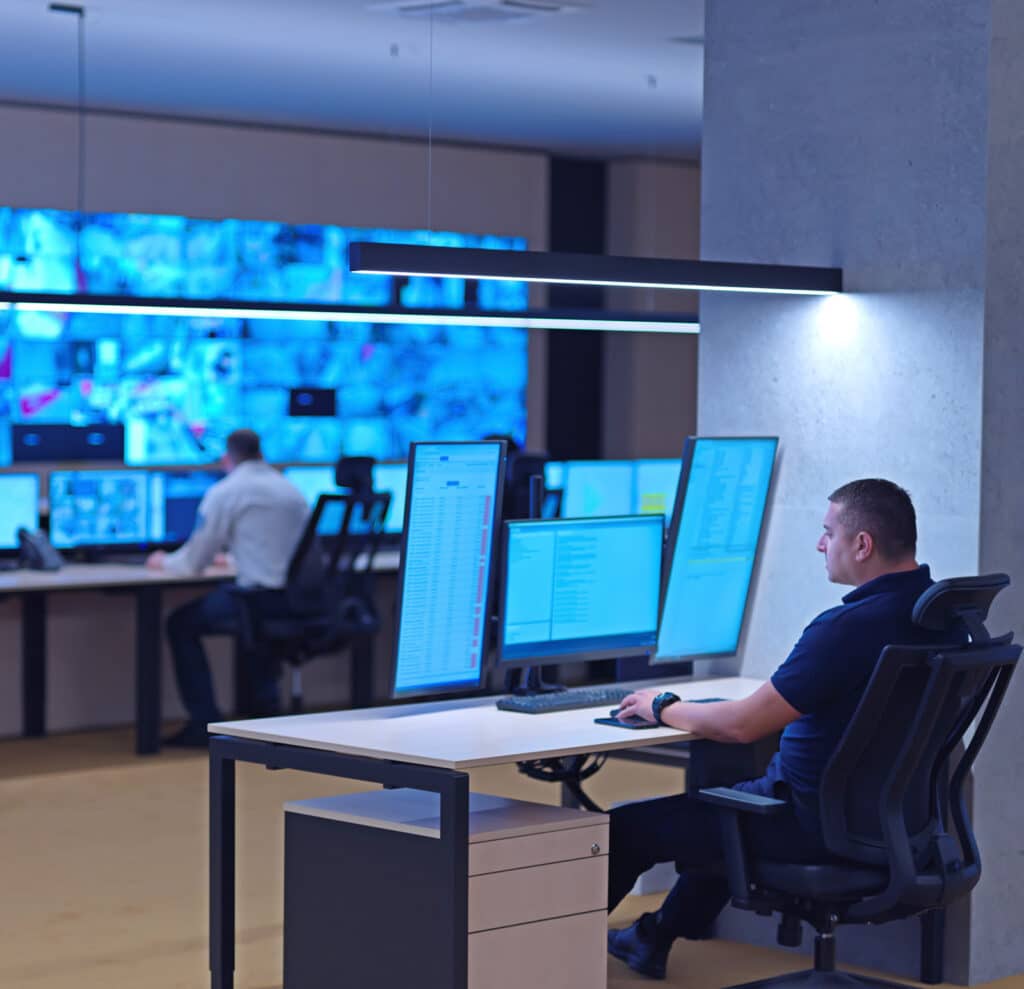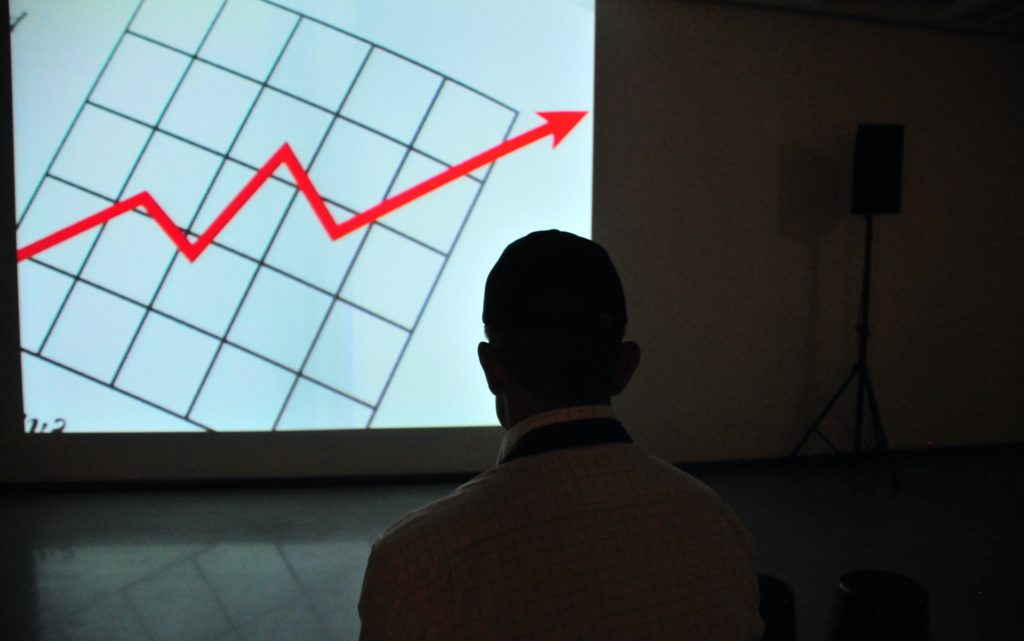For years, Security Operations Centers (SOCs) have been charged with effectively and rapidly responding to cyberthreats and security breaches. And as a security professional, you are likely already familiar with the ins and outs of running an SOC today.
But what about tomorrow? A slew of emerging technologies are disrupting the security landscape, which means that your future success will hinge on how flexible, adaptable, and responsive you are to them all.
The strength of your SOC will depend on its ability to integrate–and ultimately, defend against–new advances like AI, machine learning, and automation.

The reality is that these powerful tools can be used (or manipulated) by both sides.
So while AI and machine learning might bring tremendous efficiencies to your security operations, they will do exactly the same for your adversaries: the cybercriminals who are laser-focused on breaching your defenses. While these technologies may make your SOC more robust, they will also make your adversaries more powerful.
Given these challenges, to achieve high-level situational awareness at your SOC, you will need to capitalize on your existing strengths, be vigilant about potential weaknesses, and have a vision for how your SOC will meet future challenges.
Today, we’ll explore the common pain points Security Operations Centers face–and how to address them. We’ll also show you how to create a future-focused operation with greater situational awareness, more efficient capabilities, and stronger defenses.
The state of SOCs today

Acting as a unified digital hub for an organization’s physical and cyber defenses, today’s Security Operations Centers are tasked with continuously monitoring, detecting, and responding to mass amounts of threats.
Their mission is to remain ever-vigilant to what is happening across an organization’s networks, connected devices, servers, databases, applications, and more for a big-picture, real-time view of total IT operations.
But despite their essential function within an organization, SOCs are also plagued with common challenges that can limit their effectiveness.
These include things like alert fatigue, skill shortages, gaps in network visibility, and the ever-increasing volume and complexity of threats.
For example, situational awareness can be limited by your staff’s lack of skill or up-to-date knowledge, which can translate as an inability to identify emerging threats. On the other hand, annoyances like false alarms may limit your team’s readiness to respond to real emergencies.
Finally, the very technology you use could be making your SOC’s job more complicated than it needs to be, in what is already a complex environment.
How can your SOC achieve high-level situational awareness?

Situational awareness is the ability to detect and respond to threats in real-time–and it’s vital to a robust security strategy.
But as technology gets more sophisticated, SOC teams must become faster and more efficient at organizing, monitoring, streamlining, and making sense of a sea of data.
Hidden below the surface of this data deluge are often signs of things gone amiss: potential breaches, possible threats, blind spots that must be fixed.
To rapidly pinpoint–and respond–to these means you must have a high level of situational awareness.
Here’s how to do it:
Strategy #1: Deploy advanced technologies

Cutting-edge technologies like AI, machine learning, and automation can help you reach a higher level of situational awareness.
For example, AI can help you pinpoint anomalies in the data across your IT systems, quickly surfacing insights that human eyes may have missed. Automation, on the other hand, can help you rapidly deploy a targeted response at any hint of a breach.
And then there is the software that you use across your systems: the right software can help you bring together hundreds of different data points to help you achieve a birds-eye view of your security posture.
For example, one of your best defenses could be security intelligence software that gives you a unified view of potential threats and vulnerabilities.
Solutions like Bold Group’s backStage can help protect against hackers, viruses, and worms; block certain traffic, maintain security patches, and detect malicious threat signatures–including Zero-Day threats.
Working hand-in-hand with Network Navigator, it can also help you remotely monitor the health of your networks and IoT devices in real-time.
These solutions empower your SOC with detailed diagnostics that can identify problems before they turn into crises.
Strategy #2: Build the strength and skills of your people

Behind every strong security strategy is a strong workforce.
Your security operations team has to be skilled and well-trained at monitoring, detecting, investigating, and responding to threats day or night.
Because they must protect everything from intellectual property and proprietary technologies to your business systems and sensitive personnel data, they must not only be technologically astute, but capable of collaborating with each other and across the organization to defend it from every angle.
The time you invest in training and upskilling this workforce can make all the difference between an efficient, functional, and successful SOC operation–and one that is lagging, inefficient, and likely to miss key emerging threats.
From your SOC manager to your incident responders, analytics team, and threat hunters, everyone needs to stay current and on top of emerging threats.
We recommend keeping your team up-to-date on the latest security innovations, cybercrime trends, and emerging threats, which seem to proliferate by the day.
The knowledge your team had yesterday may have helped prevent yesterday’s attacks–but that may not be the case in the future.
We also recommend ensuring your team has a wide variety of skill sets from person to person, including incident analysis and response; threat hunting; intrusion detection; and system and intelligence monitoring.
To stay up to date, budget for ongoing employee training in these domains.
Strategy #3: Implement powerful best practices

To attain a high level of situational awareness, your SOC must be prepared to deal with emerging threats in real-time. To do this, we recommend the following best practices:
- Insist on end-to-end visibility: To be effective, your SOC team must have access to all of the organization’s IT-related activity, including the monitoring systems on your network. Blind spots can lurk behind organizational silos, and if you cannot access and actually see all of an organization’s devices and systems, you cannot protect them. All it takes to topple your security is a single compromised device, flying under the radar. This applies to third-party services, too: ensure that vendors you partner with are transparent about their security posture.
- Immediately patch vulnerabilities: Regular security updates and patches can keep you safe from malware and other security exploits. Patching bugs as they are discovered is critical to your organization’s cyberdefenses.
- Have a plan for all types of potential threats: Does your team know what to do when faced with a new type of threat? Ensure that you have a comprehensive action plan in place for a variety of threats–and that your team is trained on how to execute that plan when the need arises.
Situational awareness in the realm of cyber threats is critical for decision makers in information technology and information security, as it provides a comprehensive understanding of the threat landscape.
Enhanced cyber situational awareness facilitates the generation of actionable intelligence from threat intelligence, allowing for the timely identification and mitigation of active threats and the improvement of security controls.
Preparing your SOC for the future

Is your Security Operations Center prepared for the future? Emerging trends and technologies like AI, machine learning, and new IoT devices will continue to shape the cybersecurity landscape. The question is: will your SOC be prepared?
We hope these insights can help you fortify your security defenses. Achieving situational awareness excellence is the key in the evolving world of security, and we believe these ideas will get you closer to doing just that.
Not sure where to begin? Start with the right technology and tools. Bold Group’s security intelligence software can help you achieve and maintain high levels of situational awareness, no matter what the future may bring.
Along with backStage and Network Navigator, we also recommend our powerful alarm monitoring software, Manitou, for top-level situational awareness that incorporates your physical security and alarm systems. Manitou can help you integrate several disparate software systems so you can manage multiple security applications from one dashboard.
Contact us today to see what is possible for your organization!
